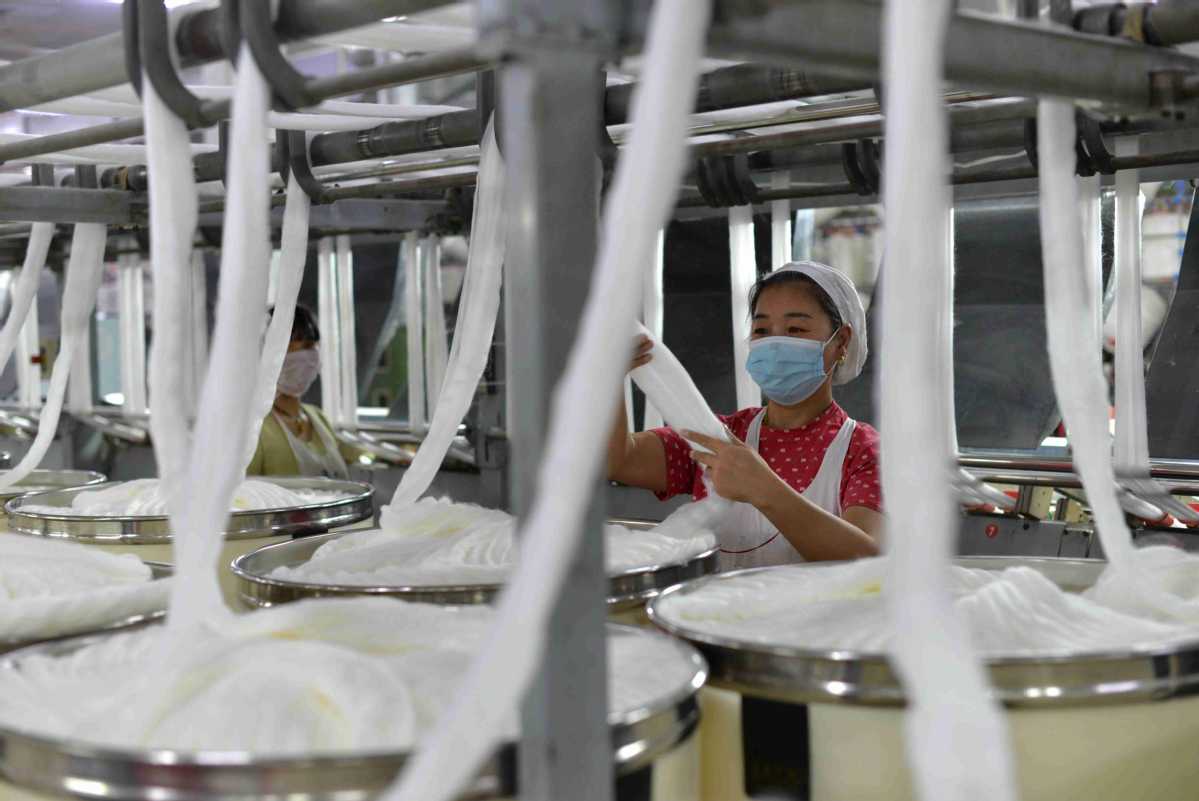RCEP a catalyst for regional integration


Robust ecosystem
Experts say the RCEP pact will accelerate regional economic integration through lower tariffs, stronger supply chains and production networks, and forge a more robust trade ecosystem in the region.
The RCEP's common rules of origin, which stipulate that product components from any member country are treated equally, will increase sourcing options within the region, create more opportunities for small and medium-sized enterprises to integrate into the regional supply chains and reduce trading costs for businesses.
For emerging economies among the 15 signatories, foreign direct investment inflows are also expected to grow as major investors in the region are stepping up specialization to develop supply chains.
"I see the potential of the RCEP becoming an Asia-Pacific super supply chain," said Professor Lawrence Loh, director of the Center for Governance and Sustainability at the Business School of the National University of Singapore, adding that if any parts of the supply chain become disrupted, other countries can come in to patch it up.
As the biggest free trade agreement ever forged, the RCEP will ultimately create a very powerful method that could be a role model for many other free trade areas and free trade agreements worldwide, the professor said.
Gu Qingyang, associate professor at the Lee Kuan Yew School of Public Policy of the National University of Singapore, told Xinhua that the vibrant dynamism of the region is also a strong attraction for economies outside the region, which is witnessing increasing investment.
Inclusive growth
The pact will also play an important role in narrowing the development gap and allowing for an inclusive and balanced sharing of prosperity.
According to a World Bank report published in February 2022, lower- and middle-income countries will see the biggest wage gains under the RCEP partnership.
Simulating the impact of the trade deal, the study found that real incomes could grow by as much as 5 percent in Vietnam and Malaysia, and as many as 27 million more people will enter the middle-income group by 2035.
Undersecretary of State and Spokesman of the Cambodian Ministry of Commerce Penn Sovicheat said the RCEP could help Cambodia graduate from its least-developed country status as soon as 2028.
The RCEP is a catalyst for long-term and sustainable trade growth, and the trade pact is a magnet to attract more foreign direct investments to his country, he told Xinhua. "More FDIs mean more new capital and more new job opportunities for our people," he said.
The kingdom, known for its agricultural products such as milled rice, and manufactured garments and shoes, stands to gain from the RCEP in terms of further diversifying its exports and integrating into the regional and global economy, the official said.
Michael Chai Woon Chew, deputy secretary-general of the Associated Chinese Chambers of Commerce and Industry of Malaysia, told Xinhua that the transfer of technology and production capacity from more developed countries to the less developed is a significant benefit of the trade deal.
"It helps to increase the economic output, improve income levels, and enhance purchasing power to buy more goods and services from more developed economies and vice-versa," Chai said.
As the world's second-largest economy with strong consumption capacity and powerful production and innovation potential, China will provide an anchor mechanism for the RCEP, said Loh.
"There's a lot to gain for all parties concerned," he said, adding that the RCEP has diverse economies in different stages of development, so stronger economies like China can help the emerging ones while the stronger economies can also benefit from the process due to new demand by the new markets.
Xinhua



































